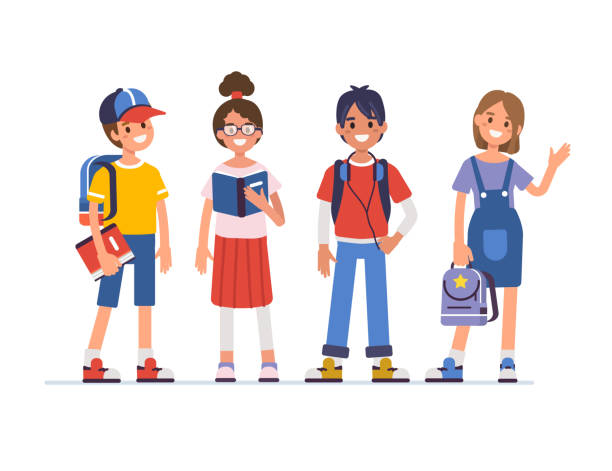Guidelines For Students:
Guidelines for Schools / Teachers:
- The exhibition is dedicated to engineering and sustainability applications aimed at solving future issues related to resources such as energy, water, and waste disposal. Projects outside this focus will be disqualified.
- Each school should appoint a point of contact (HOD, physics teacher, or chemistry teacher) to guide students in conceptualizing ideas and preparing models during the exhibition. Students must register in teams of three and submit a concept note detailing their idea to address future world problems.
- Schools can nominate up to four projects (with a maximum of three students per team) for the exhibition. Participation is limited to students in grades 9, 10, 11, and 12.
- Ideas must be developed into working models with applications in fields such as mechanical engineering, computer science & engineering, electronics & communication engineering, electrical & electronics engineering, civil engineering, chemical engineering, aerospace engineering, artificial intelligence, automation, and robotics. Teachers should help students generate unique, sustainable ideas.
- Registration for the Sustainable Innovators science exhibition is free. Schools must ensure their teams comply with the submission guidelines.
- The final model should be operational and fully detailed. Teachers may assist in the preparation of the model but cannot help during the final presentation stage. Basic, unoriginal concepts like windmill or solar pump models will be rejected, and teachers must ensure projects have innovative elements to avoid disqualification.
- Sustainable Innovators, its representatives, and the organizing team will not cover any costs associated with the preparation of the model.
- All the interested students will have to make team of minimum 2 and maximum 3 members post which they will be allowed to propose the concept note for the model
- The idea/ concept of model should be solving the problem related to resources such as Energy / Electricity , Water and Waste Disposal.
- The students should be from class 10th 11th & 12th only. There is no criteria for teams to be formed from students of each class. Students / Teachers are free to decide on their own
- Out of the box Ideas / Unique ideas which solves current world problems keeping sustainability in mind will only be accepted
- Students will have to submit their ideas in the Ideas form by clicking on the Submit your Ideas button on the homepage
- Students must adhere to word limits in each section while submitting their ideas
- Students are free to take help of their teachers while deciding on the ideas and also for preparation of the model if selected
- The model should be working or must solve a problem the world is facing today or likely to face in future
- The model should align with concepts which are sustainable in nature and are eco friendly.
- The repetitive concepts with no new innovation or applications of engineering to solve the world problems such as windmill, solar water pump will be rejected.
- Any plagiarism in the concept either from internet or fellow teams will lead to disqualification.
- Students are encourages to check the shortlisting criteria before working on the ideas
- Each concept submitted will be evaluated by the esteemed jury members. The decision of the selection committee will be final and binding
- Once Shortlisted, Students will be given 20 days to work on the model to be presented in the exhibition.
- The working model must be an exact or an extension of the ideas submitted. Any deviation from the ideas submitted will lead to disqualification
- Only 30 Teams from each city will be shortlisted to proceed to next round. Students are encouraged to visit the website regularly to keep themselves updated
- There are multiple fields in the Ideas form. Some are mandatory and others are not. Filling non mandatory fields is not required however it can earn you some brownie points for presenting your Idea well
- Make sure to read shortlisting criteria for both rounds before submitting your ideas for maximizing your chances of winning.
Guidelines for Students:
- Interested students must form teams of 2 to 3 members to propose a concept note for their model.
- The model’s idea/concept should address problems related to resources such as energy, electricity, water, and waste disposal.
- Participants must be in classes 9th, 10th, 11th, or 12th. There is no requirement for team members to be from the same class; students and teachers can decide on the team composition.
- Only innovative and unique ideas that address current world problems with a focus on sustainability will be accepted.
- Students must submit their ideas through the Ideas form by clicking on the “Submit your Ideas” button on the homepage.
- Adhere to the word limits in each section when submitting ideas.
- Students can seek their teachers’ help in deciding on ideas and preparing the model if selected.
- The model should be functional or solve a current or future global problem.
- The model must align with sustainable & innovation principles.
- Repetitive concepts lacking innovation, such as windmills or solar water pumps, will be rejected.
- Plagiarized concepts from the internet or other teams will result in disqualification.
- Review the shortlisting criteria before developing ideas.
- Each submitted concept will be evaluated by an esteemed jury. The selection committee’s decision is final and binding.
- Shortlisted students will have 10 days to develop the model for the exhibition.
- The working model must closely follow the submitted ideas. Any deviation will lead to disqualification.
- Only 30 teams from each city will advance to the next round. Regularly check the website for updates.
- Filling in non-mandatory fields in the Ideas form is not required but can earn extra points for a well-presented idea.
- Read the shortlisting criteria for both rounds before submitting ideas to maximize your chances of success.
- All the interested students will have to make team of minimum 2 and maximum 3 members post which they will be allowed to propose the concept note for the model
- The idea/ concept of model should be solving the problem related to resources such as Energy / Electricity , Water and Waste Disposal.
- The students should be from class 10th 11th & 12th only. There is no criteria for teams to be formed from students of each class. Students / Teachers are free to decide on their own
- Out of the box Ideas / Unique ideas which solves current world problems keeping sustainability in mind will only be accepted
- Students will have to submit their ideas in the Ideas form by clicking on the Submit your Ideas button on the homepage
- Students must adhere to word limits in each section while submitting their ideas
- Students are free to take help of their teachers while deciding on the ideas and also for preparation of the model if selected
- The model should be working or must solve a problem the world is facing today or likely to face in future
- The model should align with concepts which are sustainable in nature and are eco friendly.
- The repetitive concepts with no new innovation or applications of engineering to solve the world problems such as windmill, solar water pump will be rejected.
- Any plagiarism in the concept either from internet or fellow teams will lead to disqualification.
- Students are encourages to check the shortlisting criteria before working on the ideas
- Each concept submitted will be evaluated by the esteemed jury members. The decision of the selection committee will be final and binding
- Once Shortlisted, Students will be given 20 days to work on the model to be presented in the exhibition.
- The working model must be an exact or an extension of the ideas submitted. Any deviation from the ideas submitted will lead to disqualification
- Only 30 Teams from each city will be shortlisted to proceed to next round. Students are encouraged to visit the website regularly to keep themselves updated
- There are multiple fields in the Ideas form. Some are mandatory and others are not. Filling non mandatory fields is not required however it can earn you some brownie points for presenting your Idea well
- Make sure to read shortlisting criteria for both rounds before submitting your ideas for maximizing your chances of winning.

Novelty of Idea
Novelty of Idea
When it comes to sustainable novelty of ideas, it’s essential to focus on innovative concepts that not only capture attention but also contribute positively to the environment and society. One novel idea could be the development of eco-friendly packaging solutions made from biodegradable materials. These innovative packages could replace traditional plastic packaging, reducing pollution and waste. Additionally, incorporating technology such as QR codes on these packages to provide consumers with information about recycling methods and environmental impact can enhance sustainability awareness. This approach not only introduces a novel concept but also promotes eco-conscious behavior and contributes to a more sustainable future.
Practicality assesses the feasibility and real-world applicability of the sustainable idea. A practical idea should be technically feasible, economically viable, and culturally acceptable. It considers factors such as available resources, scalability, and ease of implementation. Practical sustainable solutions are those that can be readily adopted and integrated into existing systems or environments.


Uniqueness of Idea for Sustainability
Uniqueness of Idea for Sustainability
Uniqueness emphasizes the distinctive qualities of the idea within the realm of sustainability. A unique sustainable idea stands out from existing solutions by offering a different approach, utilizing unconventional methods, or addressing specific environmental or social issues in a novel way. Uniqueness often involves a combination of creative thinking, interdisciplinary collaboration, and a deep understanding of the context in which the idea is applied.

- 9335148016
- mail@sustainableinnovators.in
- Dainik Jagran -inext 2, Sarvodaya Nagar, Jagran Prakashan Building, Dainik Jagran inext, Kanpur, Uttar Pradesh – 208005
- 9335148016
- mail@sustainableinnovators.in
- Dainik Jagran -inext 2, Sarvodaya Nagar, Jagran Prakashan Building, Dainik Jagran inext, Kanpur, Uttar Pradesh – 208005
Copyright © 2023 Jagran Prakashan Limited All Rights Reserved.



